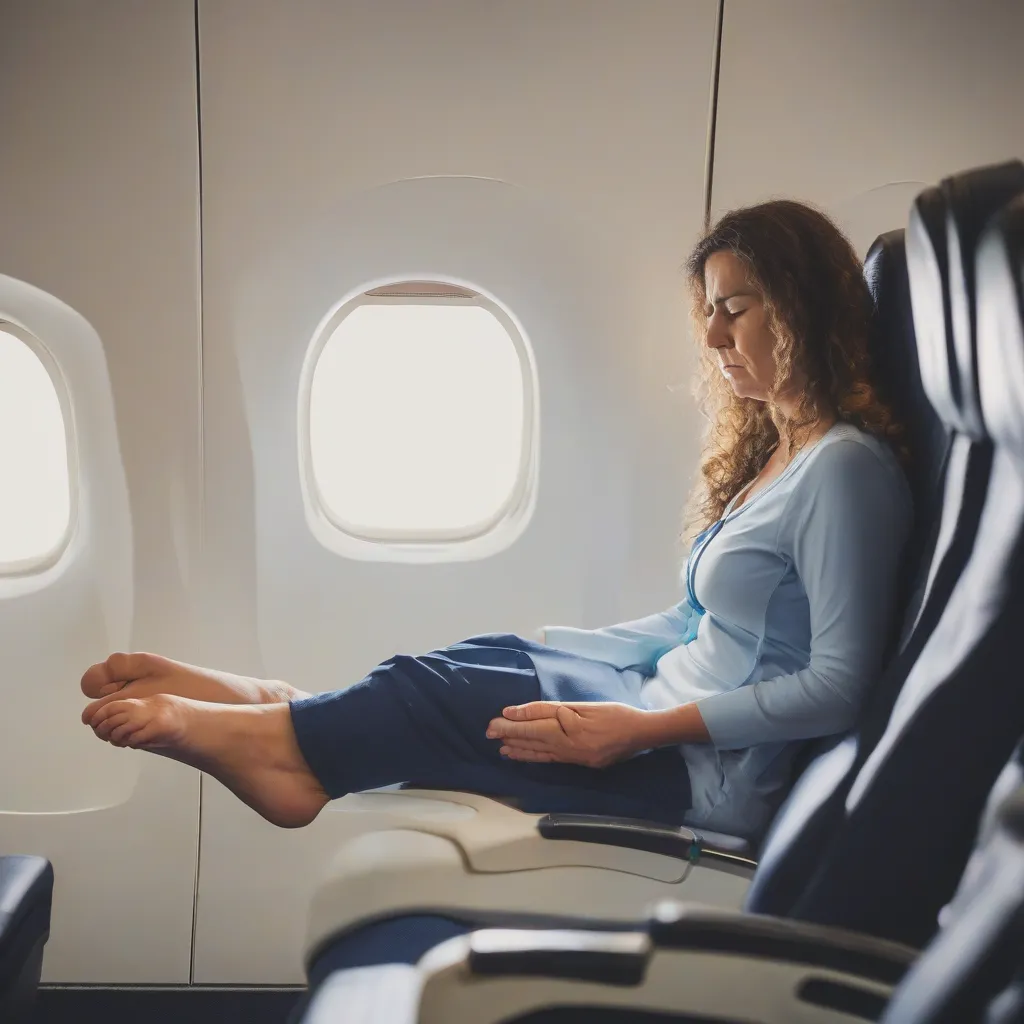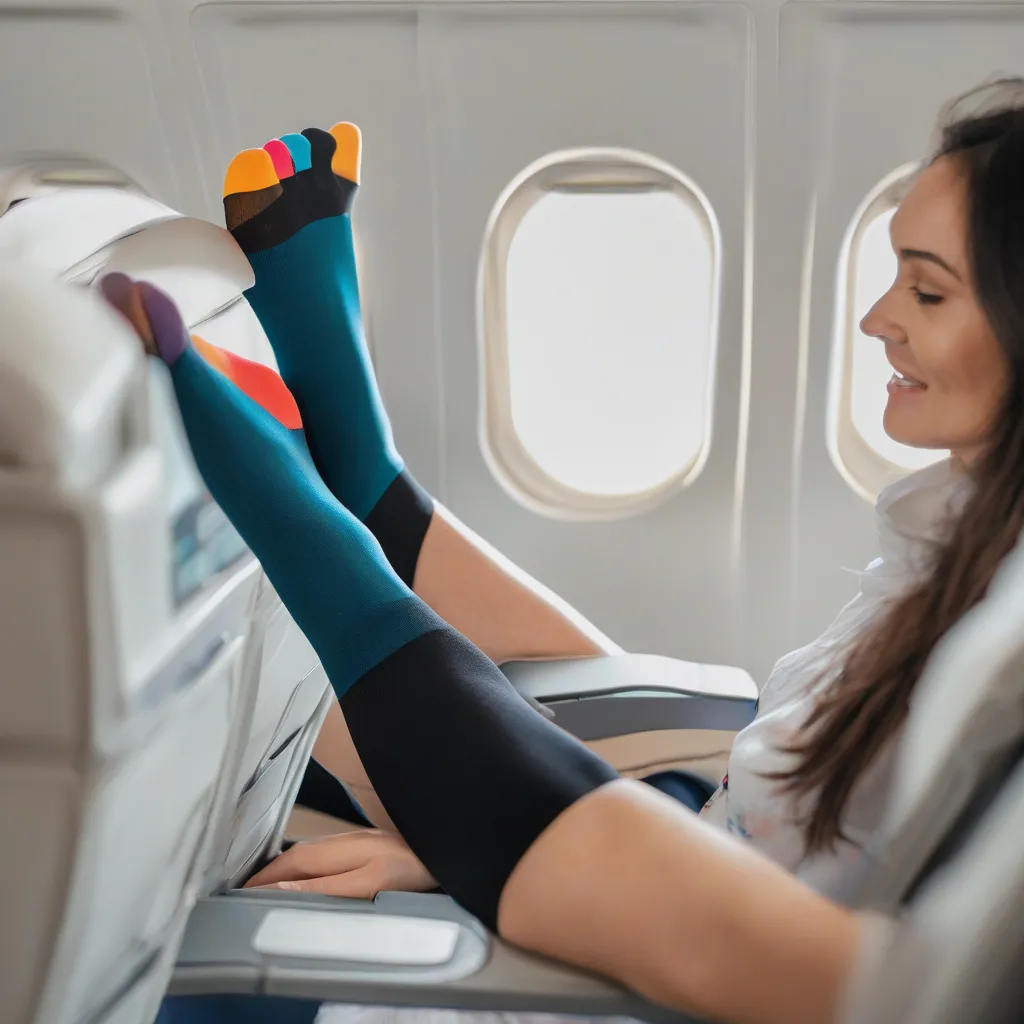Have you ever stepped off a plane, feeling like a puffy version of yourself? You’re not alone! Many people experience swelling during or after travel, especially after long flights. While it might seem like a minor inconvenience, understanding the “why” behind travel-related swelling can help you manage it better.
What Causes Travel Swelling?
This type of swelling, often in the feet, ankles, and hands, is called edema. It happens when fluid builds up in your body tissues. Imagine you’re a sponge, and travel throws a little extra water your way! Here’s why this happens:
1. Prolonged Sitting or Standing:
Just like a stagnant pond, our circulation slows down when we sit or stand still for long periods, especially common during flights or road trips. This can cause fluid to pool in our lower extremities.
2. Changes in Cabin Pressure:
Ever noticed how chip bags puff up on a flight? Cabin pressure changes can affect fluid distribution in our bodies too, causing temporary swelling.
3. Dehydration:
Air travel, especially, can be dehydrating. When we’re dehydrated, our bodies try to hold onto water, which can lead to swelling.
4. Salty Foods:
Indulging in those complimentary pretzels? High-sodium snacks can make you retain water, contributing to that puffy feeling.
5. Underlying Medical Conditions:
While usually harmless, in some cases, swelling can be a sign of underlying health conditions. If you experience persistent or severe swelling, it’s always best to consult a doctor.
 Airplane Travel Swelling
Airplane Travel Swelling
Minimizing Travel Swelling: Here’s How!
Nobody wants to feel like a bloated travel buddy! Thankfully, there are many things you can do to minimize travel swelling:
1. Stay Hydrated:
This is your most potent weapon! Sip on water throughout your journey, especially during flights. Avoid sugary drinks and excessive alcohol, which can dehydrate you.
2. Compression Socks Are Your Friend:
These magical socks improve circulation in your legs, preventing fluid from pooling. Consider wearing them on long flights or road trips.
3. Keep Moving:
Even on a plane, you can get that blood flowing! Try doing simple ankle pumps, foot circles, or take short walks down the aisle when possible.
4. Watch Your Salt Intake:
Be mindful of salty snacks and meals, especially before and during your journey. Choose fresh fruits, vegetables, and low-sodium options.
5. Elevate Your Feet:
Whenever possible, prop up your feet with a pillow or your luggage to encourage fluid drainage.
 Compression Socks for Travel
Compression Socks for Travel
When to Consult a Doctor?
While most travel-related swelling is temporary, it’s essential to seek medical attention if:
- The swelling is severe, painful, or doesn’t improve with self-care measures.
- You experience shortness of breath, chest pain, or dizziness along with swelling.
- The swelling only affects one limb.
Travel Smart, Feel Your Best!
Remember, a little preparation can go a long way in preventing travel-related discomfort. By following these tips, you can enjoy your journey and arrive at your destination feeling refreshed and ready to explore!
Pro Tip: Did you know that according to travel wellness expert, Dr. Sarah Jones, “Incorporating elements of Feng Shui into your travel planning, like choosing destinations with positive energy flow, can enhance your overall travel experience and well-being?” So next time you’re planning a trip, consider the principles of Feng Shui for a more harmonious and enjoyable journey!
For more tips on staying healthy and comfortable while traveling, check out our other articles on Travelcar.edu.vn. We also have an interesting read on how rivers change as they travel across land, which might just spark your wanderlust!
We’d love to hear about your travel experiences! Share your tips for combating travel swelling in the comments below.